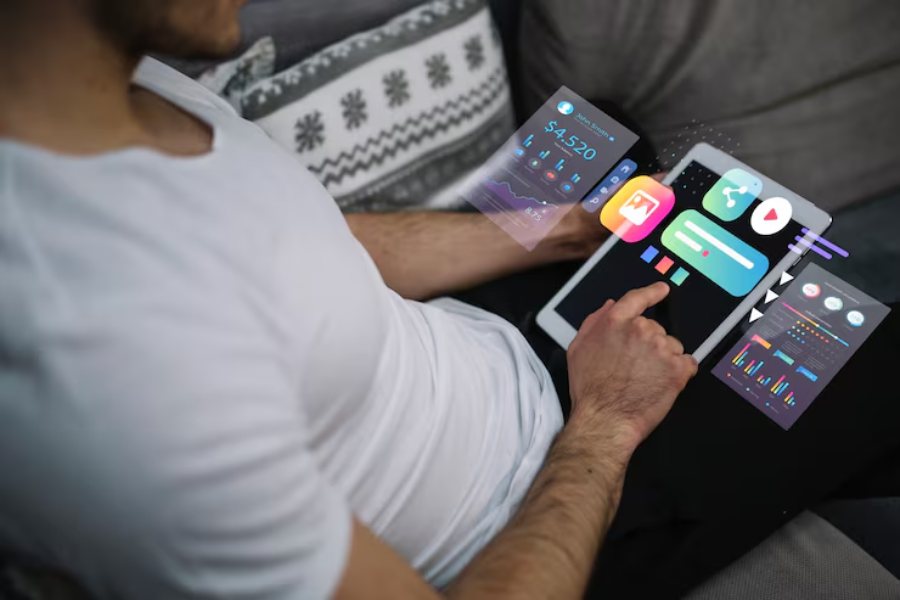What Nuances Should You Consider When Designing an OTT App? Essential Insights for Effective Development

Designing an OTT app means focusing on more than just streaming videos—it’s about delivering a seamless, intuitive, and enjoyable experience. According to recent research, 94% of consumers prioritize easy navigation as the most important feature in digital platforms, and 83% consider a beautiful and up-to-date UX design essential. (Source) These numbers make it clear: your interface isn’t just decoration—it’s your user’s first impression and their reason to stay.
To get it right, you need to go beyond the basics. Prioritize a clean and intuitive interface, ensure platform scalability, streamline content management, and implement strong security measures. Personalization, cross-device compatibility, fast loading times, and simple navigation are no longer optional—they’re expected. By paying close attention to these critical elements, you’ll give your app the best chance to stand out, retain users, and grow in a competitive OTT landscape.
Fundamental Considerations in OTT App Design
When designing and developing an OTT app, focus on clarity, easy access to content, and features that help keep users engaged. A good balance of design, functionality, and content personalization is required for user satisfaction.
User Experience and User Interface Principles
A clean, user-friendly interface (UI) is crucial for OTT platforms. You should prioritize simplicity and remove clutter. The simplicity helps users find and enjoy content faster. Like in any other app design, color schemes should avoid being too bright or distracting. Instead, focus should be on subtle contrast and readability.
Make sure to adapt your app to various screen sizes, such as TVs, tablets, and smartphones. Consistency in design across all platforms is vital. Buttons, menus, and content thumbnails should be large for easy tapping or clicking.
Use intuitive icons and simple text labels. Analyze feedback to refine your interface, as even small changes can impact ux and satisfaction.
Intuitive Navigation and Advanced Search
Navigation must help users access what they want to watch with minimal effort. Organize menus by categories, genres, and user history. Including a well-placed search bar can improve the streaming experience.
Support advanced search features, like filters for language, release date, or content type. For example, Netflix and Amazon Prime Video use suggestions as you type. These suggestions and filters narrow down results.
Integrating a clear and consistent navigation system reduces frustration. Breadcrumb trails, back buttons, and home shortcuts help users locate content. This approach boosts usability and lowers abandonment rates.
Personalized Recommendations and User Engagement
Personalized recommendations are a key part of modern OTT app design. Mimic top apps by using analytics to track user habits, watch history, ratings, and likes. This data shapes tailored content lists and suggestions.
Encourage user interaction with features like ratings, feedback prompts, and “continue watching” rows. Push notifications about new shows or updates, when used sparingly, keep users coming back to your platform.
Engagement tools help users feel connected to your OTT platform. Personalized elements make the experience feel custom and relevant.
Technical and Strategic Nuances for OTT Apps
Building a robust OTT app requires you to balance user experience, security, business goals, and technical demands. You need to focus on device support, reliable streaming, content safety, monetization, and deep analytics to drive long-term engagement and revenue.
Cross-Platform Compatibility and Smart TV Integration
To reach the widest audience, your OTT platform must support multiple device types. This includes smartphones, tablets, web browsers, and smart TVs running different operating systems (like Android TV, Roku, Tizen, and webOS). Develop responsive user interfaces that adjust seamlessly to various screen sizes and resolutions.
Use cross-platform frameworks or develop native apps for the most popular operating systems. Smart TV integration often requires custom development and strict UI guidelines for remote controls. Testing your app across devices is vital to avoid playback issues or navigation problems, which directly affect user retention.
Integration with casting devices such as Chromecast or Apple AirPlay can expand how users interact with content. Your OTT apps must perform smoothly across all environments to maintain a consistent brand experience.
Content Management, Monetization, and Security
A strong Content Management System (CMS) helps you organize, schedule, and update your video library with minimal effort. Create easy-to-manage catalogs for content creators and allow flexible sorting by genre, language, or region.
For monetization, choose between subscription models (SVOD), advertising (AVOD), or pay-per-view options. Integrate secure and easy-to-use payment gateways that support a variety of payment methods. This improves conversion rates and makes it easier to scale revenue.
Protecting your content and user data is non-negotiable. Implement Digital Rights Management (DRM) and encryption to defend against piracy. You may also need region-locking and watermarking as extra measures. Ensure your app meets legal standards for privacy and secure handling of user information to build trust and avoid costly breaches.
Performance Optimization and Analytics
Strong performance optimization keeps viewers watching. Use adaptive bitrate streaming, which automatically adjusts video quality to match the user’s internet speed. This helps avoid buffering and ensures the best experience, even on slow connections.
Leverage a reliable Content Delivery Network (CDN) to distribute videos efficiently across the globe, reducing latency and load times. Regularly monitor server load and streaming performance, and plan for spikes in traffic, especially during popular releases.
Analytics are essential for guiding app improvements. Track metrics like play duration, churn rates, content popularity, and user engagement. Integrate tools that visualize trends and highlight what drives user retention. Use this data to refine recommendations, optimize content placement, and steer business decisions with confidence.
Conclusion
Designing an OTT app means paying close attention to small but important details. Clear navigation, accessible content, and responsive layouts help users find what they want fast. A strong focus on user experience encourages viewers to keep coming back.
You should make use of personalization features, such as individual profiles and custom watchlists. These options let users feel that the app is made for them. Add simple login processes, smooth video play, and fast load times to avoid user frustration.
Consider essential technical elements like a secure content management system, reliable streaming technology, and robust security features. Make sure your platform can scale as your user base grows. Using data analytics helps you understand what your viewers like so you can improve your content.
A good OTT app also supports accessibility for everyone. Tools like captions, audio descriptions, and voice search should be available. Clear design, minimal clutter, and quick access features improve the overall usability.
When you combine solid UX design with technical best practices, your OTT app is more likely to succeed in a crowded market. Focus on what really matters to your audience and keep adapting your app as technology and user needs change. By prioritizing these elements, you set your platform apart and deliver a seamless viewing experience.
